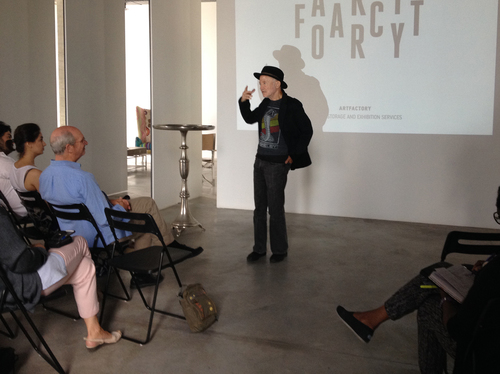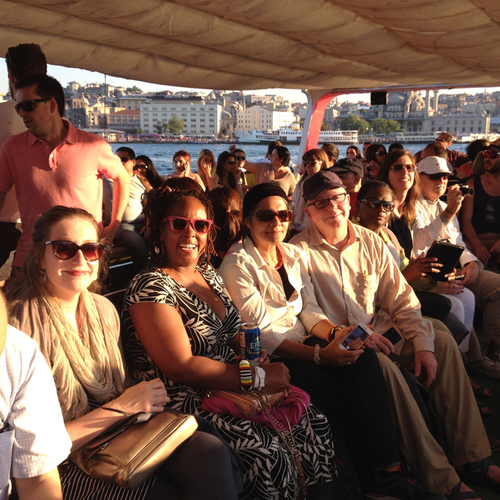New Residency: Istanbul
November 3, 2014
By Simonetta Moro
Vice President for Academic Affairs; Director of the School.

Does a city actually generate ideas? Or is the melting pot […] just a place where those with ideas congregate? Which is to say, is a city merely a place where ideas come to fruition, brought in by outsiders—nomads—who are looking for a place to express themselves? (Mike Adams, 2nd Year IDSVA student)
This and other questions, in the spirit of IDSVA’s ethos of inquiry, were front and center during our summer residencies, and particularly in Istanbul, introduced for the first time as a residency site in the summer of 2014. The reference to the nomads is not accidental, but stems from the readings students do prior to their arrival in Istanbul, and further solicited by two lectures given by world-renowned philosopher and cultural theorist Sylvère Lotringer, founder of Semiotext(e), under the title “T. E. Lawrence and Nomadology: The War Machine.”
These lectures took off from Lotringer’s critique of Lawrence’s Seven Pillars of Wisdom in relation to the theoretical work of Deleuze & Guattari as elaborated in particular in their seminal text A Thousand Plateaus. They had a particular resonance in Istanbul, a city that IDSVA identifies on the Topological Studies curriculum as Transhistorical, an apt denomination for a place spanning two continents, Europe and Asia, whose history stretches across nearly 2400 years, assuming different names during its long existence: Byzantium, Constantinople, Istanbul…

The city on the Bosporus closes the circle of the Topological Studies curriculum that starts with the Ancient World (Rome), goes through the Feudal-Agrarian paradigm (Spannocchia Castle), the Medieval-Urban town (Siena), the Renaissance city (Florence), the Baroque-Global commerce site (Venice), the Neoclassical-Early Industrial city (Berlin), the Bourgeois city (Paris), the Post-Industrial city (New York), and ends with the Transhistorical city (Istanbul).
Through the ages, the city has been at the centre of a vast network of commercial roads linking Europe with the Middle east and the far East, the Mediterranean with the Black Sea, becoming a receptacle of different cultures and populations, as it is manifested in its architecture, its landmarks and its artifacts. Today Istanbul is gaining prominence in the international scene, and particularly in the art scene, thanks to its many cultural institutions and events. IDSVA students experienced first hand all these different dimensions of Istanbul’s topology by visiting historical and religious sites of the Old City in Sultanahmet (such as the Topkapi Palace, the Archaeological museum, the Blue Mosque and the Hagia Sophia), the bustling streets of the New City with vestiges of the old European neighborhoods and architecture, contemporary galleries and quintessential places like Orhan Pamuk’s Museum of Innocence, or again the Asian side of the city where they were offered an exclusive insight into Art Factory, a most impressive contemporary art institution directed by Dila Kabakci, and featuring local and international artists. In this occasion, Sylvère Lotringer gave a lecture on the history of Semiotext(e) and its role in introducing French theory to the American public, and how that in itself is an act of nomadic thinking, a disrupting agent that breaks the homogeneity of smooth space.
